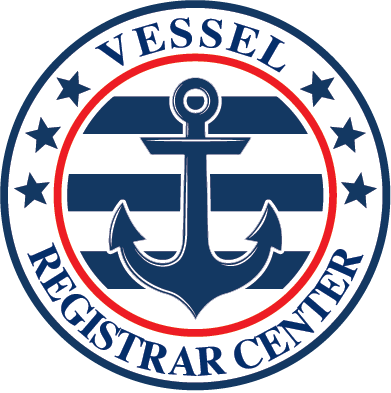33 CFR Subpart E – Flotation and Safe Loading Requirements-Outboard Motor and Related Equipment Test Weights
183.75 Applicability.
Manufacturers of vessels to which this subpart applies must use test weights that are not less than the recommended weights set forth in Table 183.75. Table 183.75 details the weight (in pounds) of gasoline outboard engines and related equipment for various rated power (horsepower) ranges.
Table 183.75 – Weights (In Pounds) of Gasoline Outboard Engines and Related Equipment for Various Rated Power (Horsepower) Ranges
| Single engine installations | ||||||||
| Column number | ||||||||
| 1 | 2 | 3 | 4 | 5 | 6 | 7 | 8 | 9 |
| Engine power range (Horsepower) | Dry weight12 | Running weight3 | Swamped weight4 | Controls & rigging5 | Battery weight, dry | Battery weight submerged | Full portable fuel tank6 | Total weight (Sum of columns 3,5,6,8) |
| 0.1-2.0 | 30 | 32 | 27 | 0 | 0 | 0 | 0 | 32 |
| 2.1-3.9 | 42 | 44 | 37 | 0 | 0 | 0 | 0 | 44 |
| 4.0-6.9 | 66 | 69 | 59 | 0 | 0 | 0 | 25 | 94 |
| 7.0-10.9 | 105 | 110 | 94 | 5 | 20 | 11 | 50 | 185 |
| 11.0-22.9 | 127 | 133 | 113 | 6 | 45 | 25 | 50 | 234 |
| 23.0-34.9 | 187 | 196 | 167 | 9 | 45 | 25 | 100 | 350 |
| 35.0-64.9 | 286 | 300 | 255 | 14 | 45 | 25 | 100 | 459 |
| 65.0-94.9 | 439 | 461 | 392 | 22 | 45 | 25 | 100 | 628 |
| 95.0-104.9 | 458 | 481 | 409 | 23 | 45 | 25 | 100 | 649 |
| 105.0-144.9 | 526 | 552 | 469 | 26 | 45 | 25 | 100 | 723 |
| 145.0-194.9 | 561 | 589 | 501 | 28 | 45 | 25 | 100 | 762 |
| 195.0-209.9 | 652 | 685 | 582 | 33 | 45 | 25 | 100 | 863 |
| 210.0-300.0 | 699 | 734 | 624 | 35 | 45 | 25 | 100 | 914 |
| 300.1-350.0 | 884 | 928 | 789 | 44 | 45 | 25 | 100 | 1,117 |
Notes:
1 Dry weight is the manufacturer’s published weight for the shortest midsection increased by 10 percent to account for longer midsections and additional required hardware usually not included in published weights. This weight is intended to represent the heaviest model in each power category. For boats designed with a transom height of 20 inches or less, the weight in Column 2 may be reduced by 10 percent. Recalculate Columns 3, 4, and 9 as appropriate.
2 For diesel outboards, replace the value in Column 2 with the manufacturer’s published dry weight + 10 percent.
3 Running weight is the dry weight plus fluids (including 2-stroke oil) and the heaviest recommended propeller. Calculated as 5 percent of dry weight.
4 Swamped weight is 85 percent of running weight.
5 Rigging and controls include engine related hardware required to complete the installation (e.g., controls, cables, hydraulic hoses, steering pumps and cylinders). Calculated as 5 percent of dry weight.
6 If the boat is equipped with a permanent fuel system and is not intended to use a portable tank, the portable fuel tank weight may be omitted.
183.101 Applicability.
This subpart applies to monohull inboard boats, inboard/outdrive boats, and airboats less than 20 feet in length, except sailboats, canoes, kayaks, inflatable boats, submersibles, surface effect vessels, amphibious vessels, and raceboats.
[CGD 75-168, 42 FR 20243, Apr. 18, 1977, as amended by USCG-1999-5832, 64 FR 34716, June 29, 1999]
183.105 Quantity of flotation required.
- Each boat must have enough flotation to keep any portion of the boat above the surface of the water when the boat has been submerged in calm, fresh water for at least 18 hours and loaded with:
- A weight that, when submerged, equals two-fifteenths of the persons capacity marked on the boat;
- A weight that, when submerged, equals 25 percent of the dead weight; and
- A weight in pounds that, when submerged, equals 62.4 times the volume in cubic feet of the two largest air chambers, if air chambers are used for flotation.
- For the purpose of this section, “dead weight” means the maximum weight capacity marked on the boat minus the persons capacity marked on the boat.
183.110 Definitions.
For the purpose of this subpart:
Bilge means the area in the boat, below a height of 4 inches measured from the lowest point in the boat where liquid can collect when the boat is in its static floating position, except engine rooms.
Connected means allowing a flow of water in excess of one-quarter ounce per hour from the engine room bilge into any other compartment with a 12 inch head of water on the engine room side of the bulkhead.
Engine room bilge means the area in the engine room or a connected compartment below a height of 12 inches measured from the lowest point where liquid can collect in these compartments when the boat is in its static floating position.
Engine room means the compartment where a permanently installed gasoline or diesel engine is installed, including connected compartments.
Open to atmosphere means a compartment that has at least 15 square inches of open area directly exposed to the atmosphere for each cubic foot of net compartment volume.
Sealed compartment means an enclosure that can resist an exterior water level of 12 inches without seepage of more than one-quarter fluid ounce per hour.
[CGD 77-145, 43 FR 56858, Dec. 4, 1978, as amended by CGD 82-010, 48 FR 8273, Feb. 28, 1983; CGD 85-098, 52 FR 19728, May 27, 1987; CGD 96-026, 61 FR 33670, June 28, 1996; USCG-1999-5832, 64 FR 34716, June 29, 1999; USCG-1999-5151, 64 FR 67176, Dec. 1, 1999]
183.112 Flotation material and air chambers.
- Flotation materials must meet the requirements in § 183.114 as listed in Table 183.114 when used in the: (1) Engine room bilge, (2) engine room, or (3) bilge, unless located in a sealed compartment.
- Air chambers used to meet the flotation requirements of this subpart must not be integral with the hull.
[CGD 77-145, 43 FR 56859, Dec. 4, 1978; 44 FR 47934, Aug. 16, 1979]
183.114 Test of flotation materials.
- Vapor test. The flotation material must not reduce in buoyant force more than 5 percent after being immersed in a fully saturated gasoline vapor atmosphere for 30 days at a minimum temperature of 38 °C.
- 24-hour gasoline test. The flotation material must not reduce in buoyant force more than 5 percent after being immersed for 24 hours at 23 plus or minus 2 °C in reference fuel B, of ASTM D 471 (incorporated by reference, see § 183.5).
- 30-day gasoline test. The flotation material must not reduce in buoyant force more than 5 percent after being immersed for 30 days at 23 plus or minus 2 °C in reference fuel B, of ASTM D 471 (incorporated by reference, see § 183.5).
- 24-hour oil test. The flotation material must not reduce in buoyant force more than 5 percent after being immersed for 24 hours at 23 plus or minus 2 °C in reference oil No. 2, of ASTM D 471 (incorporated by reference, see § 183.5).
- 30-day oil test. The flotation material must not reduce in buoyant force more than 5 percent after being immersed for 30 days at 23 plus or minus 2 °C in reference oil No. 2, of ASTM D 471 (incorporated by reference, see § 183.5).
- 24-hour bilge cleaner test. The flotation material must not reduce in buoyant force more than 5 percent after being immersed for 24 hours at 23 plus or minus 2 °C in a 5-percent solution of trisodium phosphate in water.
- 30-day bilge cleaner test. The flotation material must not reduce in buoyant force more than 5 percent after being immersed for 30 days at 23 plus or minus 2 °C in a 5-percent solution of trisodium phosphate in water.
- The buoyant force reduction in paragraphs (a) through (g) of this section is measured in accordance with ASTM D 2842 (incorporated by reference, see § 183.5).
Table 183.114 – Flotation Performance Tests
| Test 183.114 | Area 183.110 | ||
| (b) Engine room bilge | (c) Engine room unless open to atmosphere | (d) Bilge | |
| (a) Vapor test | X | ||
| (b) 24 hour gasoline test | X | ||
| (c) 30 day gasoline test | X | ||
| (d) 24 hour oil test | X | ||
| (e) 30 day oil test | X | ||
| (f) 24 hour bilge cleaner test | X | ||
| (g) 30 day bilge cleaner test | X | ||
[CGD 77-145, 43 FR 56859, Dec. 4, 1978; 44 FR 47934, Aug. 16, 1979, as amended by USCG-2000-7223, 65 FR 40059, June 29, 2000]
General
183.201 Applicability.
- This subpart applies to monohull outboard boats that are:
- Less than 20 feet in length; and
- Rated for outboard engines of more than 2 horsepower.
- This subpart does not apply to sailboats, canoes, kayaks, inflatable boats, submersibles, surface effect vessels, amphibious vessels, and raceboats.
[CGD 75-168, 42 FR 20243, Apr. 18, 1977, as amended by USCG-1999-5832, 64 FR 34716, June 29, 1999]
183.202 Flotation and certification requirements.
Each boat to which this subpart applies must be manufactured, constructed, or assembled to pass the stability and flotation tests prescribed in §§ 183.225(a), 183.230(a), and 183.235(a).
183.205 Passenger carrying area.
- For the purpose of this section a boat is level when it is supported on its keel at the two points shown in Figure 2.
- As used in this subpart, the term “passenger carrying area” means each area in a boat in which persons can sit in a normal sitting position or stand while the boat is in operation. Passenger carrying areas are illustrated in Figures 3 through 8.
- The length of the passenger carrying area is the distance along the centerline of the boat between two vertical lines, one at the forward end and one at the aft end of the passenger carrying area when the boat is level as illustrated in Figures 3 and 4. For boats with a curved stem inside the passenger carrying area, the forward vertical line is where a line 45 degrees to the horizontal when the boat is level is tangent to the curve of the stem, as illustrated in Figure 5. For boats with cabins, the forward vertical line is where there is a minimum distance of two feet between the inside top of the cabin and the water line formed when the boat is swamped and loaded with weights under § 183.220 as illustrated in Figure 6.
- The breadth of each passenger carrying area is the distance between two vertical lines at the mid-length, excluding consoles, of the passenger carrying area when the boat is level as illustrated in Figures 7 and 8. For boats with round chines inside the passenger carrying area, the vertical line is where a transverse line 45 degrees to the horizontal is tangent to the arc of the chine, as illustrated in Figure 8.
[CGD 75-168, 42 FR 20243, Apr. 18, 1977, as amended by USCG-1999-5832, 64 FR 34716, June 29, 1999]
183.210 Reference areas.
- The forward reference area of a boat is the forward most 2 feet of the top surface of the hull or deck, as illustrated in Figure 9.
- The aft reference area of a boat is the aft most two feet of the top surface of the hull or deck, as illustrated in Figure 9.
183.215 Reference depth.
Reference depth is the minimum distance between the uppermost surface of the submerged reference area of a boat and the surface of the water measured at the centerline of the boat, as illustrated in Figure 10. If there is no deck surface at the centerline of the boat from which a measurement can be made, the reference depth is the average of two depth measurements made on opposite sides of, and at an equal distance from, the centerline of the boat.
183.220 Preconditioning for tests.
A boat must meet the following conditions for at least 18 hours before the tests required by §§ 183.225, 183,230, and 183.235:
- Manufacturer supplied permanent appurtenances such as windshields and convertible tops must be installed on the boat.
- The boat must be loaded with a quantity of weight that, when submerged, is equal to the sum of the following:
- The sum of 50 percent of the first 550 pounds of the persons capacity marked on the boat and 12 1/2 percent of the remainder of the persons capacity.
- Twenty-five percent of the result of the following calculation, but not less than zero: The maximum weight capacity marked on the boat; less the weight shown in Column 9 of Table 183.75 for maximum horsepower marked on the boat; less the persons capacity marked on the boat.
- The weights required by paragraph (b) of this section must be placed in the boat so that the center of gravity of each amount of weight required by paragraphs (b)(1) and (b)(2) of this section is within the shaded area illustrated in Figure 11. The location and dimensions of the shaded area are as follows:
- The shaded area is centered at the mid-length of the passenger carrying area and at the mid-breadth of the boat;
- The length of the shaded area, measured along the centerline of the boat, is equal to 40 percent of the length of the passenger carrying area of the boat; and
- The breadth of the shaded area, measured at the midlength of the passenger carrying area, is equal to 40 percent of the breadth of the passenger carrying area of the boat.
- Weight must be placed in the normal operating position of the motor and controls and the battery in lieu of this equipment. The required quantity of weight used for this purpose depends upon the maximum rated horsepower of the boat being tested and is specified in Columns 4 and 7 of Table 183.75 for the swamped weight of the motor and controls and for the submerged weight of the battery, respectively.
- Permanent fuel tanks must be filled with fuel and each external opening into the fuel tank must be sealed.
- The boat must be keel down in the water.
- The boat must be swamped, allowing water to flow between the inside and outside of the boat, either over the sides, through a hull opening, or both. Entrapped air in the flooded portion of the boat must be eliminated.
- Water must flood the two largest air chambers and all air chambers integral with the hull.
[CGD 75-168, 42 FR 20243, Apr. 18, 1977, as amended by USCG-1999-5832, 64 FR 34716, June 29, 1999; USCG-2016-1012, 82 FR 16522, Apr. 5, 2017]
183.222 Flotation material and air chambers.
- Flotation materials must meet the requirements in § 183.114 as listed in Table 183.114 when used in the bilge, unless located in a sealed compartment.
- Air chambers used to meet the flotation requirements of this subpart must not be integral with the hull.
[CGD 77-145, 43 FR 56859, Dec. 4, 1978; 44 FR 47934, Aug. 16, 1979]
Tests
183.225 Flotation test for persons capacity.
Flotation standard. When the conditions prescribed in § 183.220 are met, the boat must float in fresh, calm water as follows:
- The angle of heel does not exceed 10 degrees from the horizontal.
- Any point on either the forward or aft reference area is above the surface of the water.
- The reference depth at the reference area that is opposite the reference area that is above the surface of the water is 6 inches or less.
183.230 Stability test.
- Flotation standard. When the conditions prescribed in § 183.220 (a), (d) through (h) and paragraphs (b) and (c) of this section are met, the boat must float in fresh, calm water as follows:
- The angle of heel does not exceed 30 degrees from the horizontal.
- Any point on either the forward or aft reference area is above the surface of the water.
- The reference depth at the reference area that is opposite the reference area that is above the surface of the water is 12 inches or less.
- Quantity of weight used. Load the boat with a quantity of weight that, when submerged, is equal to the sum of the following:
- One-half of the quantity of weight required by § 183.220(b)(1).
- The quantity of weight required by § 183.220(b)(2).
- Placement of quantity of weight: starboard side. Place the weight required by paragraph (b) of this section in the boat so that:
- The quantity of weight required by § 183.220(b)(2) is positioned in accordance with § 183.220(c); and
- One-half the quantity of weight required by § 183.220(b)(1) is uniformly distributed over a distance along the outboard perimeter of the starboard side of the passenger carrying area that is equal to at least 30 percent of the length of the passenger carrying area so that the center of gravity of the quantity of weight is located within the shaded area illustrated in Figure 12, the center of gravity of the amount of weight placed on the floor of the boat is at least 4 inches above the floor, and the center of gravity of the amount of weight placed on a seat is at least 4 inches above the seat. The location and dimensions of the shaded area are as follows:
- The shaded area is centered at the mid-length of the passenger carrying area;
- The length of the shaded area is equal to 70 percent of the length of the passenger carrying area; and
- The breadth of the shaded area is 6 inches from:
- For weights placed on the floor, the outboard perimeter of the passenger carrying area; and
- For weights placed on a seat, a vertical line inside the passenger carrying area as illustrated in Figure 13.
- Placement of quantity of weight: port side. The quantity of weight required by paragraph (b)(1) of this section is placed along the port side of the passenger carrying area in accordance with the conditions prescribed in paragraph (c)(2) of this section.
183.235 Level flotation test without weights for persons capacity.
When the conditions prescribed in § 183.220 (a) and (d) through (h) are met, the boat must float in fresh, calm water as follows:
- The angle of heel does not exceed 10 degrees from the horizontal.
- Any point on either the forward or aft reference area is above the surface of the water.
- The reference depth at the reference area that is opposite the reference area that is above the surface of the water is 6 inches or less.
[CGD 77-145, 43 FR 56859, Dec. 4, 1978, as amended by USCG-1999-5832, 64 FR 34716, June 29, 1999]
General
183.301 Applicability.
- This subpart applies to monohull outboard boats that are:
- Less than 20 feet in length; and
- Rated for manual propulsion or outboard engines of 2 horsepower or less.
- This subpart does not apply to sailboats, canoes, kayaks, inflatable boats, submersibles, surface effect vessels, amphibious vessels, and raceboats.
[CGD 75-168, 42 FR 20245, Apr. 18, 1977, as amended by USCG-1999-5832, 64 FR 34716, June 29, 1999]
183.302 Flotation requirements.
Each boat to which this subpart applies must be manufactured, constructed, or assembled to pass the stability and flotation tests prescribed in §§ 183.325(a), 183.330(a), and 183.335(a).
183.305 Passenger carrying area.
- For the purpose of this section, a boat is level when it is supported on its keel at the two points shown in Figure 2.
- As used in this subpart, the term “passenger carrying area” means each area in a boat in which persons can sit in a normal sitting position or stand while the boat is in operation. Passenger carrying areas are illustrated in Figures 3 through 8.
- The length of each passenger carrying area is the distance along the centerline of the boat between two vertical lines, one at the forward end and one at the aft end of the passenger carrying area, when the boat is level, as illustrated in Figures 3 and 4. For boats with a curved stem inside the passenger carrying area, the forward vertical line is where a line 45 degrees to the horizontal when the boat is level is tangent to the curve of the stem, as illustrated in Figure 5. For boats with cabins, the forward vertical line is where there is a minimum distance of two feet between the inside top of the cabin and the water line formed when the boat is swamped and loaded with weights under § 183.320 as illustrated in Figure 6.
- The breadth of the passenger carrying area is the distance beteen two vertical lines at the mid-length, excluding consoles, of the passenger carrying area when the boat is level as illustrated in Figures 7 and 8. For boats with round chines inside the passenger carrying area, the vertical line is where a transverse line 45 degrees to the horizontal is tangent to the arc of the chine, as illustrated in Figure 7.
[CGD 75-168, 42 FR 20245, Apr. 18, 1977; 42 FR 24738, May 16, 1977]
183.310 Reference areas.
- The forward reference area of a boat is the forwardmost 2 feet of the top surface of the hull or deck as illustrated in Figure 9.
- The aft reference area of a boat is the aftmost two feet of the top surface of the hull or deck, as illustrated in Figure 9.
183.315 Reference depth.
Reference depth is the minimum distance between the uppermost surface of the submerged reference area of a boat and the surface of the water measured at the centerline of the boat, as illustrated in Figure 10. If there is no deck surface at the centerline of the boat from which a measurement can be made, the reference depth is the average of two depth measurements made on opposite sides of, and at an equal distance from, the centerline of the boat.
183.320 Preconditioning for tests.
A boat must meet the following conditions for at least 18 hours before the tests required by §§ 183.325, 183.330, and 183.335:
- Manufacturer supplied permanent appurtenances such as windshields, and convertible tops must be installed on the boat.
- The boat must be loaded with a quantity of weight that, when submerged, is equal to the sum of the following:
- Two-fifteenths of the persons capacity marked on the boat.
- Twenty-five percent of the result of the following calculation, but not less than zero: the maximum weight capacity marked on the boat; less the weight shown in Column 9 of Table 183.75 for the maximum horsepower marked on the boat; less the persons capacity marked on the boat.
- The weights required by paragraph (b) of this section are placed in the boat so that the center of gravity of each amount of weight required by paragraphs (b)(1) and (b)(2) of this section is within the shaded area illustrated in Figure 11. The location and dimensions of the shaded area are as follows:
- The shaded area is centered at the mid-length of the passenger carrying area and at the mid-breadth of the boat;
- The length of the shaded area, measured along the centerline of the boat, is equal to 40 percent of the length of the passenger carrying area of the boat; and
- The breadth of the shaded area, measured at the mid-length of the passenger carrying area, is equal to 40 percent of the breadth of the passenger carrying area of the boat.
- Weight must be placed in the normal operating position of the motor and controls in lieu of this equipment. The quantity of weight used for this purpose depends upon the maximum rated horsepower of the boat being tested and is specified in Column 4 of Table 183.75 for the swamped weight of the motor and controls.
- Permanent fuel tanks must be filled with fuel and each external opening into the fuel tank must be sealed.
- The boat must be keel down in the water.
- The boat must be swamped, allowing water to flow between the inside and the outside of the boat, either over the sides, through a hull opening, or both. Entrapped air in the flooded portion of the boat must be eliminated.
[CGD 75-168, 42 FR 20245, Apr. 18, 1977, as amended by USCG-2016-1012, 82 FR 16522, Apr. 5, 2017]
183.322 Flotation materials.
- Flotation materials must meet the requirements in § 183.114 as listed in Table 183.114 when used in the bilge, unless located in a sealed compartment.
[CGD 77-145, 43 FR 56859, Dec. 4, 1978; 44 FR 47934, Aug. 16, 1979]
Tests
183.325 Flotation test for persons capacity.
Flotation standard. When the conditions prescribed in § 183.320 are met, the boat must float in fresh, calm water as follows:
- The angle of heel does not exceed 10 degrees from the horizontal.
- Any point on either the forward or aft reference area is above the surface of the water.
- The reference depth at the reference area that is opposite the reference area that is above the surface of the water is 6 inches or less.
183.330 Stability test.
- Flotation standard. When the conditions prescribed in § 183.320 (a), (d) through (g) and paragraphs (b) and (c) of this section are met, the boat must float in fresh, calm water as follows:
- The angle of heel does not exceed 30 degrees from the horizontal.
- Any point on either the forward or aft reference area is above the surface of the water.
- The reference depth at the reference area that is opposite the reference area that is above the surface of the water is 12 inches or less.
- Quantity of weight used. Load the boat with quantity of weight that, when submerged, is equal to the sum of the following:
- One-half the quantity of weight required by § 183.320(b)(1).
- The quantity of weight required by § 183.320(b)(2).
- Placement of quantity of weight: starboard side. Place the quantity of weight required by paragraph (b) of this section in the boat so that:
- The quantity of weight required by § 183.320(b)(2) is positioned in accordance with § 183.320(c); and
- One-half the quantity of weight required by § 183.320(b)(1) is uniformly distributed over a distance along the outboard perimeter of the starboard side of the passenger carrying area that is equal to at least 30 percent of the length of the passenger carrying area so that the center of gravity of the quantity of weight is located within the shaded area illustrated in Figure 12, the center of gravity of the amount of weight placed on the floor of the boat is at least 4 inches above the floor and the center of gravity of the amount of weight placed on a seat is at least 4 inches above the seat. The location and dimensions of the shaded area are as follows:
- The shaded area is centered at the mid-length of the passenger carrying area;
- The length of the shaded area is equal to 70 percent of the length of the passenger carrying area; and
- The breadth of the shaded area is 6 inches from:
- For weights placed on the floor, the outboard perimeter of the passenger carrying area; and
- For weights placed on a seat, a vertical line inside the passenger carrying area as illustrated in Figure 13.
- Placement of quantity of weight: port side. The quantity of weight required by paragraph (b)(1) of this section is placed along the port side of the passenger carrying area in accordance with the conditions prescribed in paragraph (c)(2) of this section.
183.335 Level flotation test without weights for persons capacity.
When the conditions prescribed in § 183.320 (a) and (d) through (g) are met, the boat must float in fresh, calm water as follows:
- The angle of heel does not exceed 10 degrees from the horizontal.
- Any point on either the forward or aft reference area is above the surface of the water.
- The reference depth at the reference area that is opposite the reference area that is above the surface of the water is 6 inches or less.
[CGD 75-168, 42 FR 20245, Apr. 18, 1977, as amended by USCG-1999-5832, 64 FR 34716, June 29, 1999]




